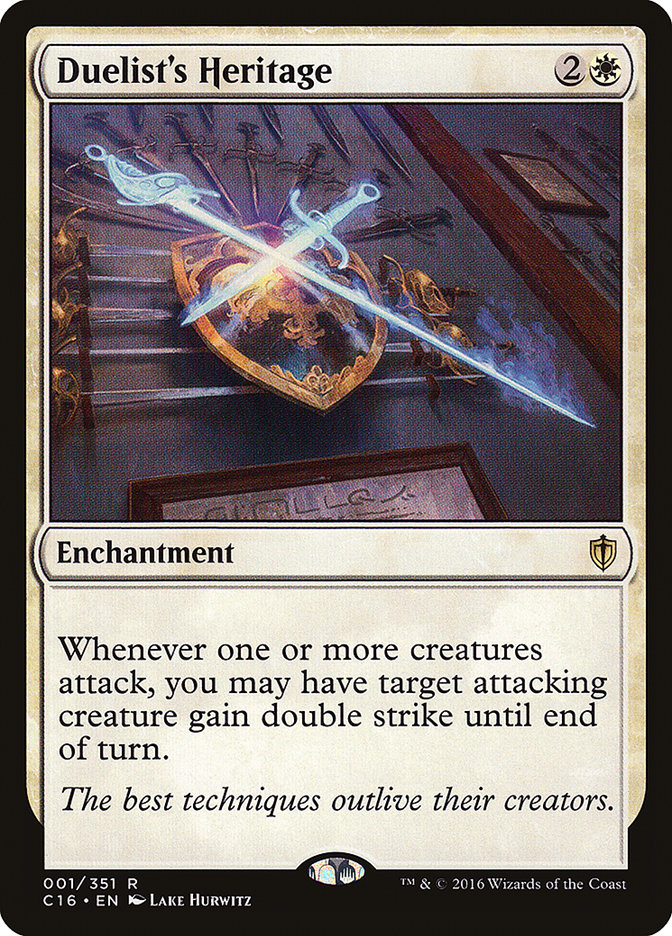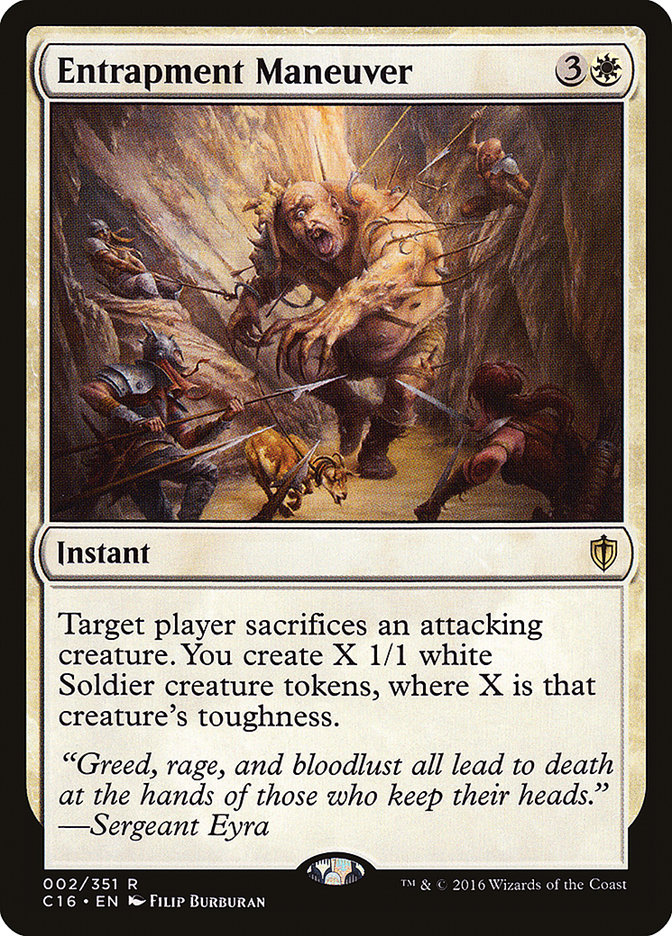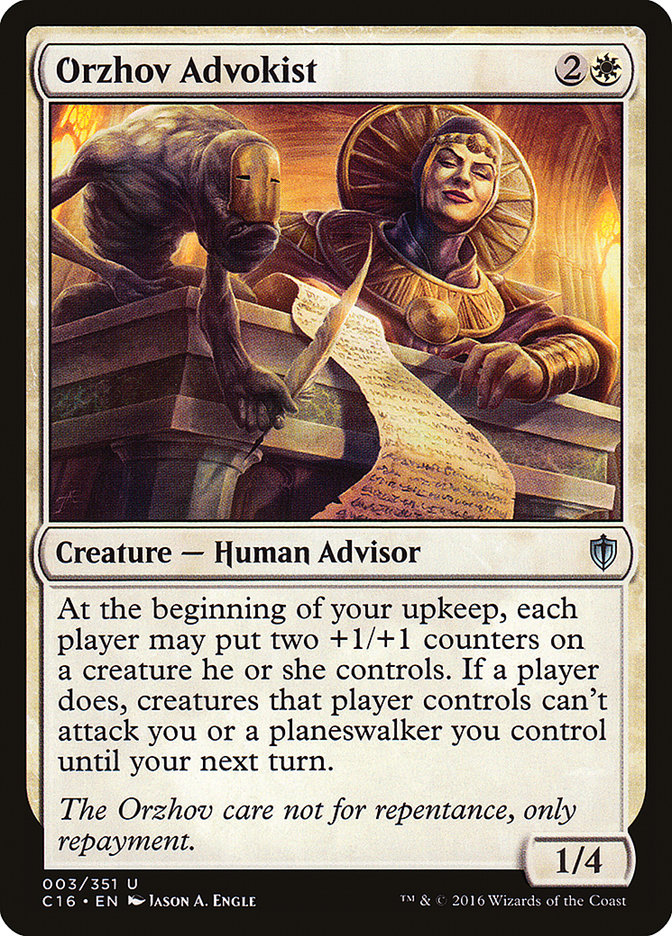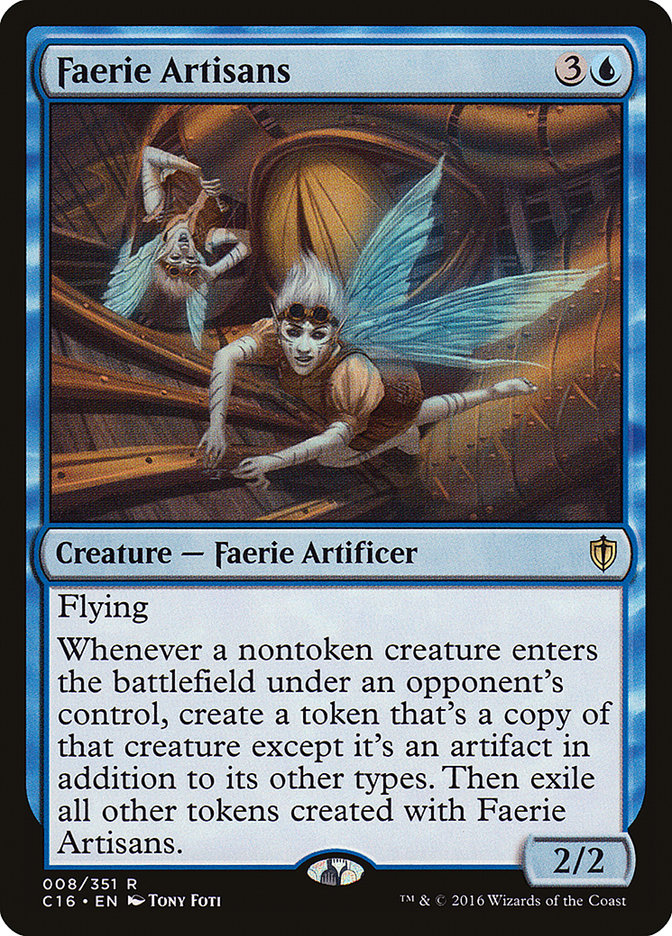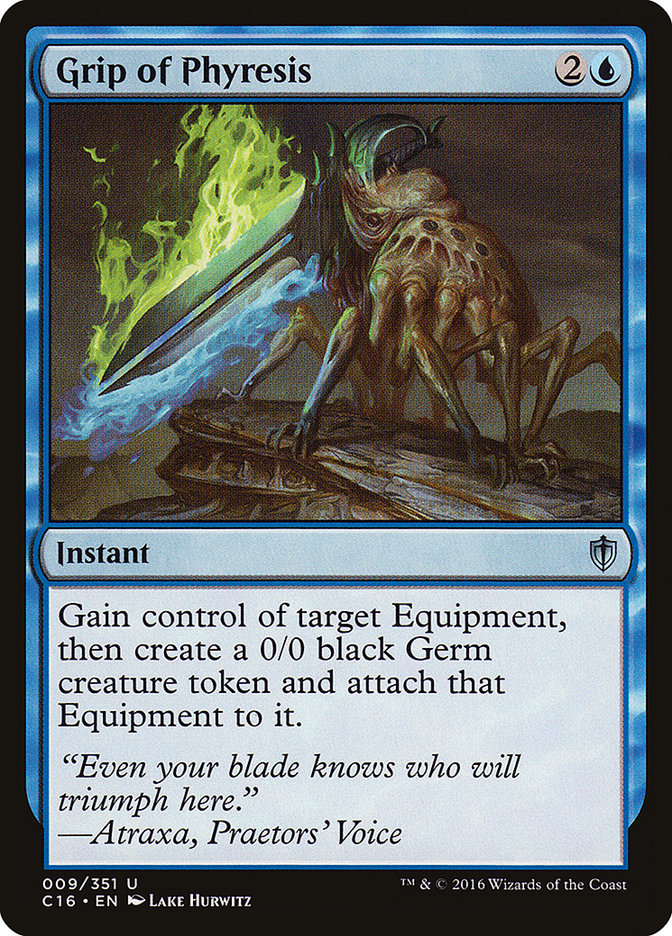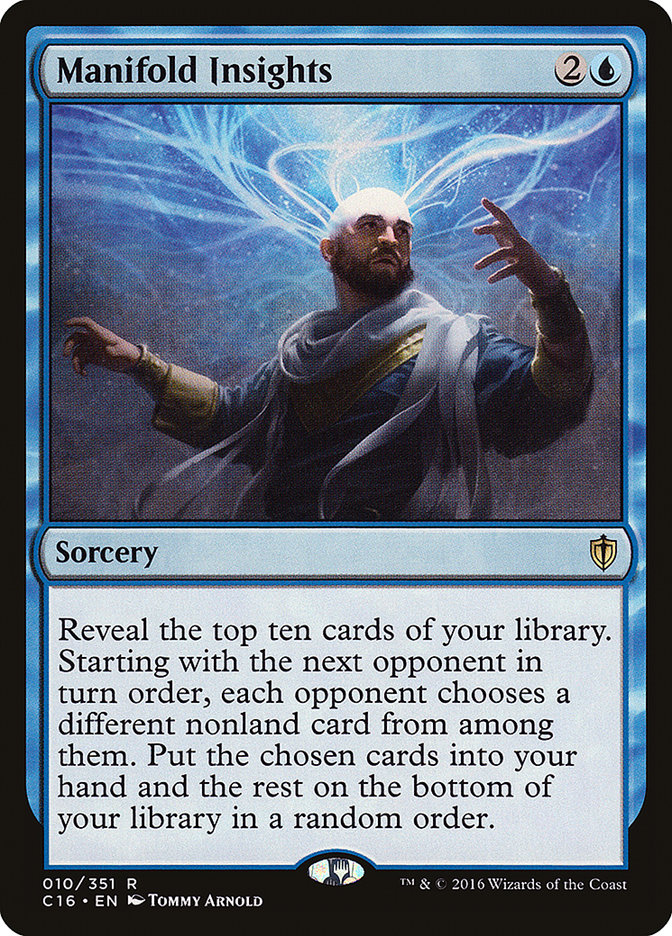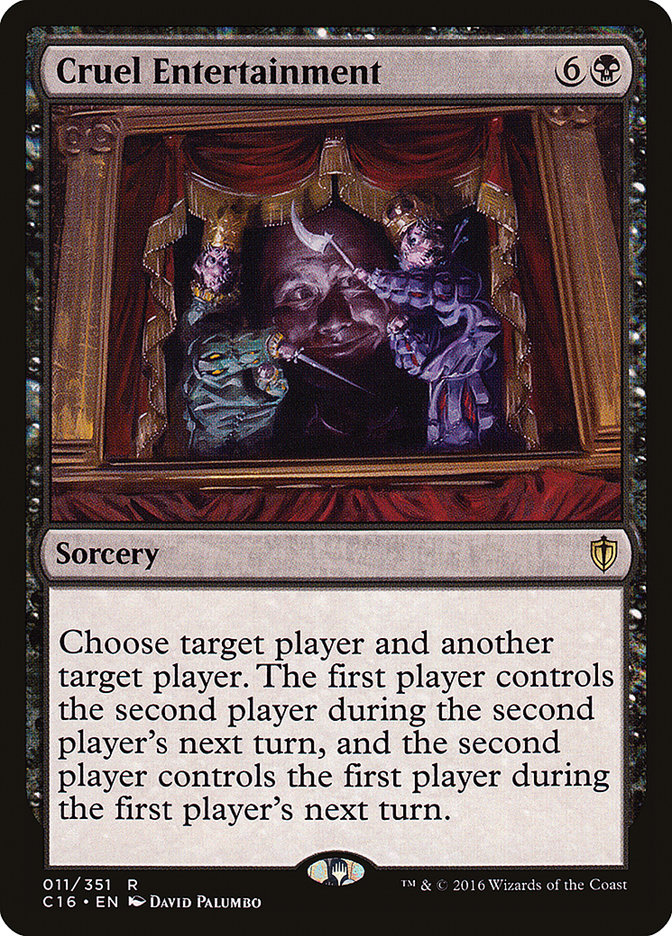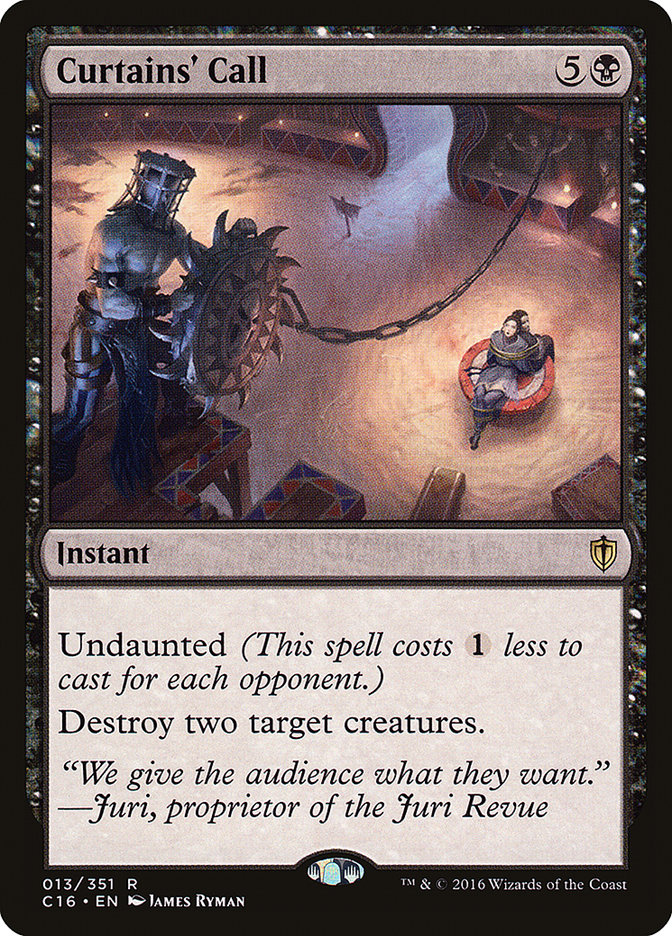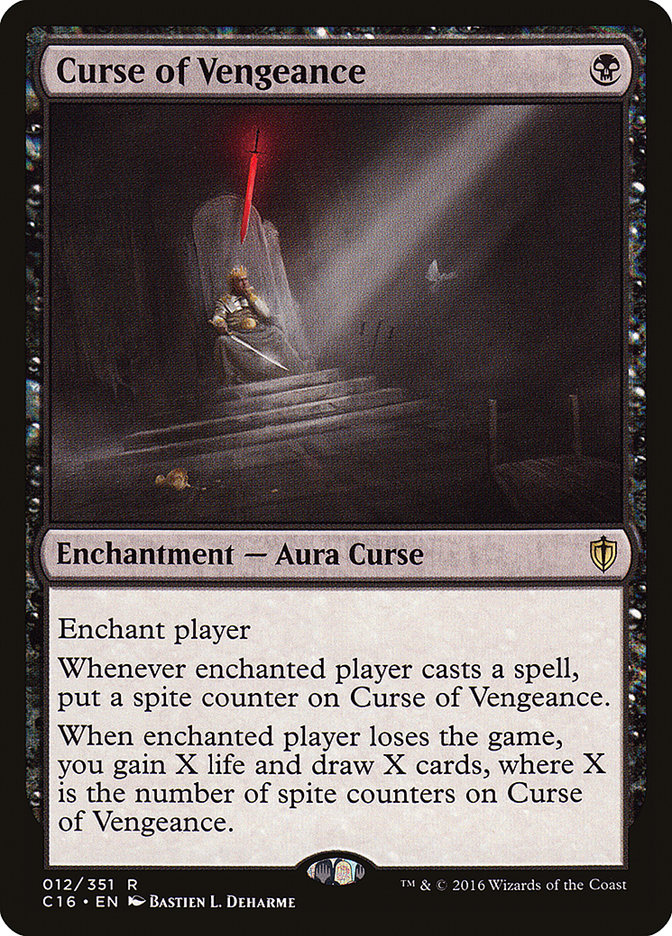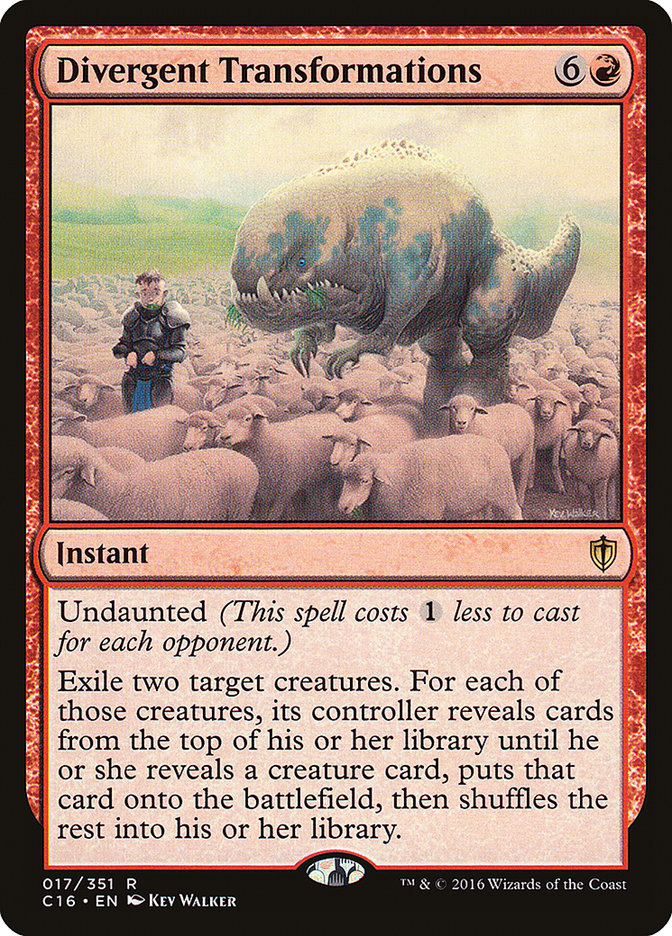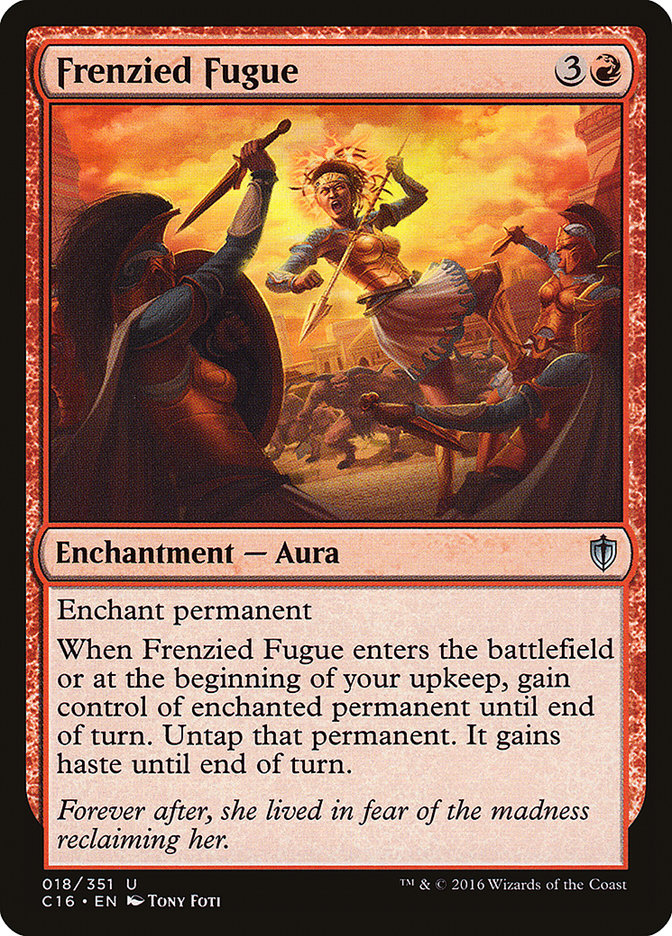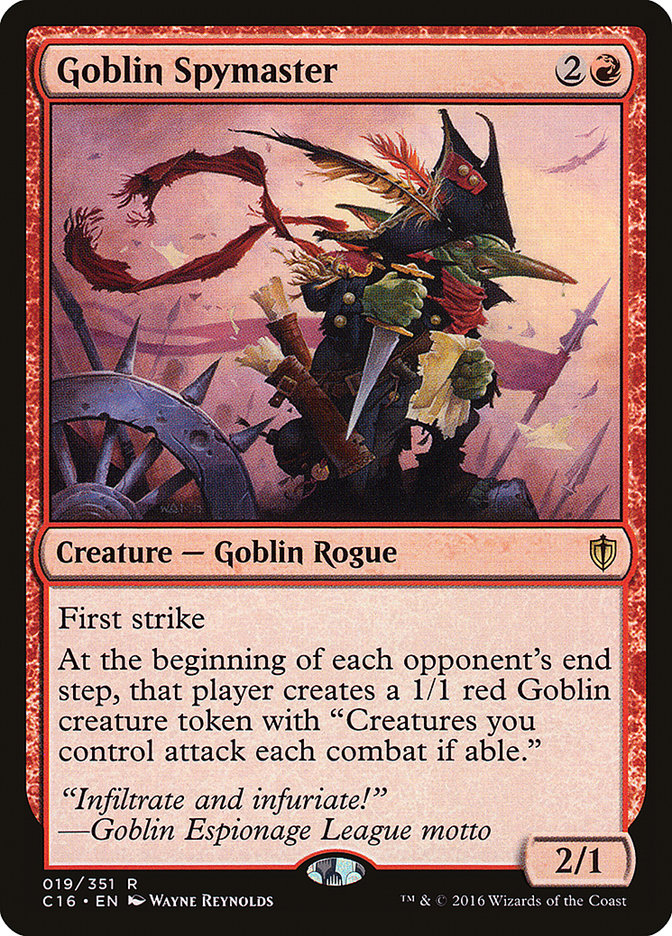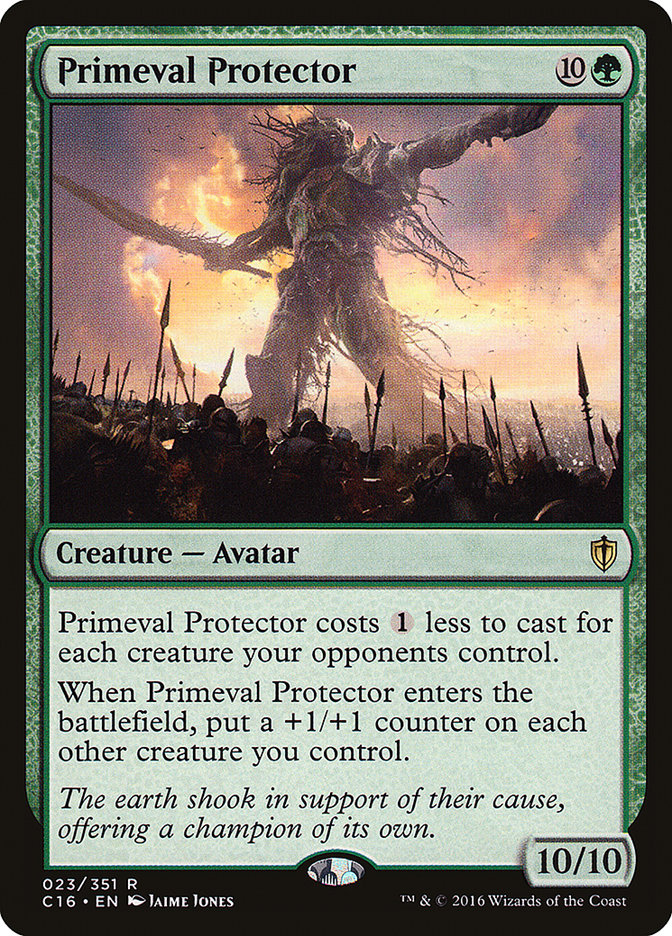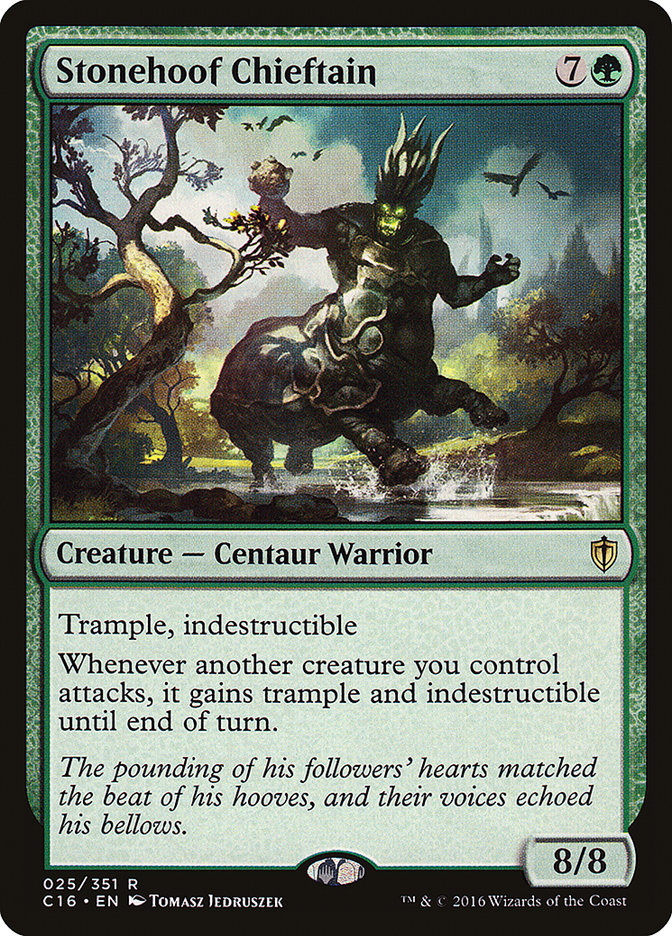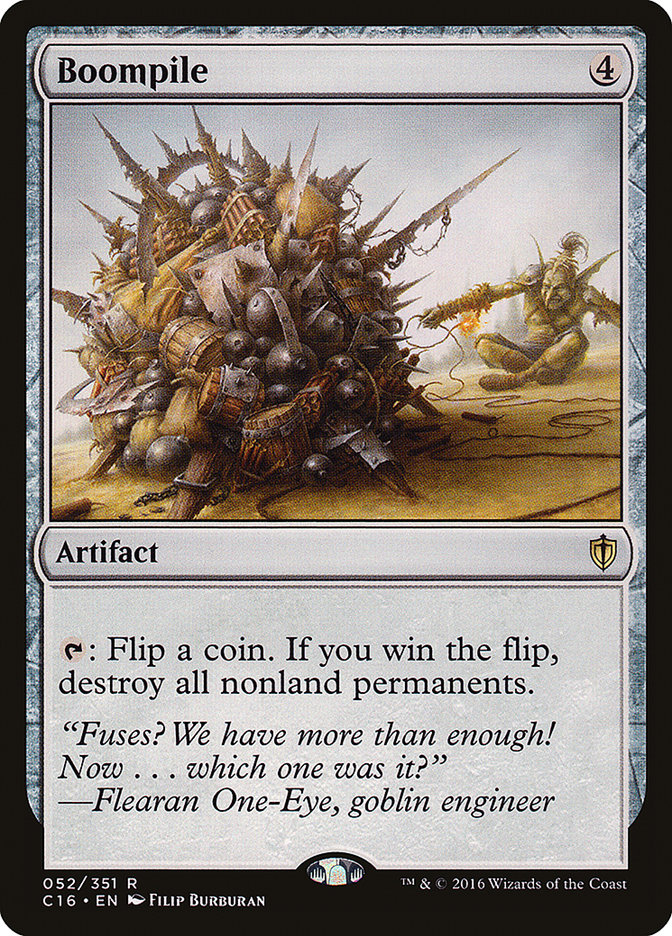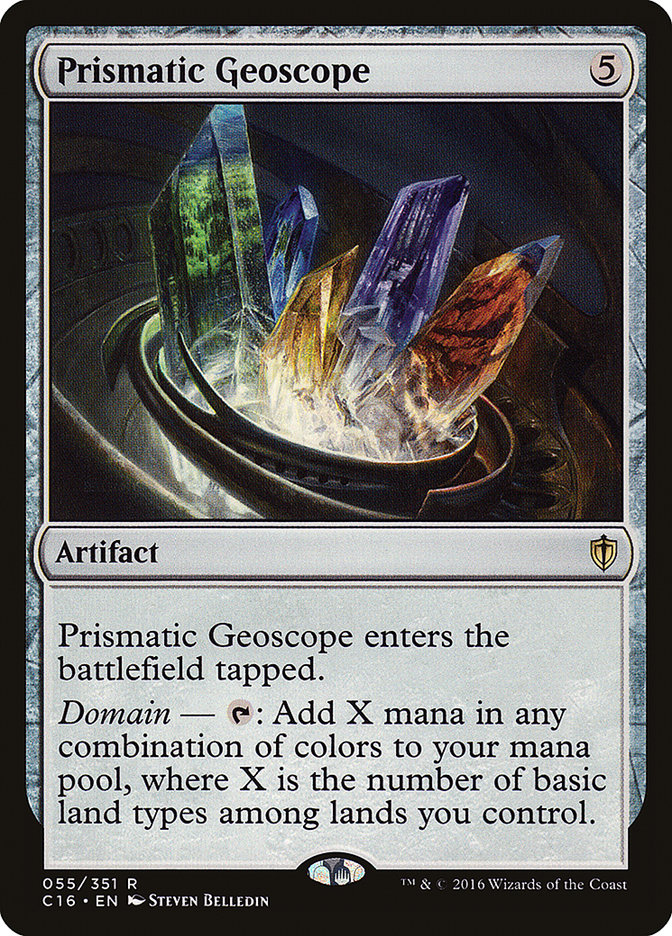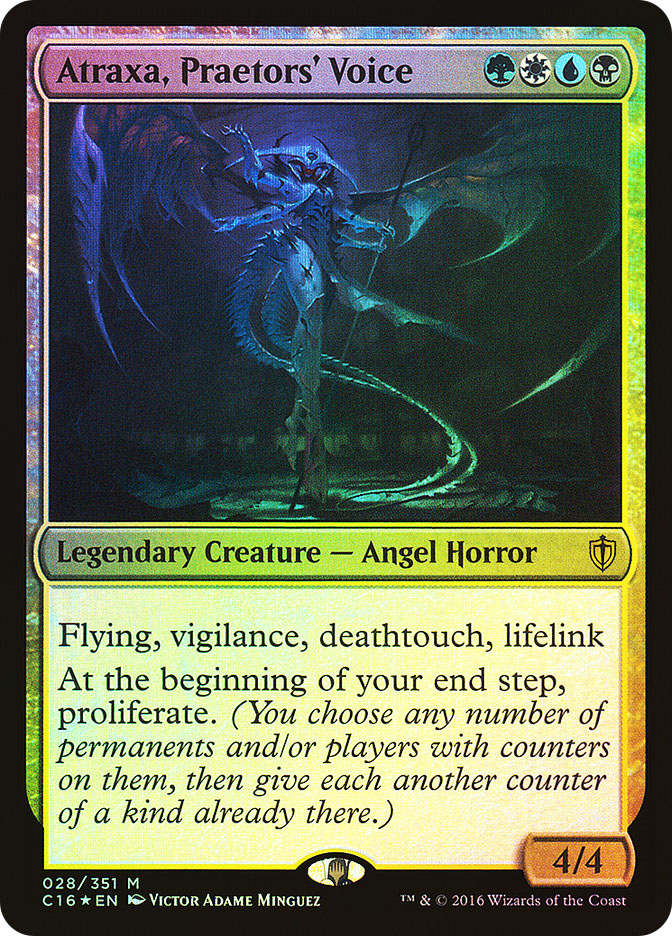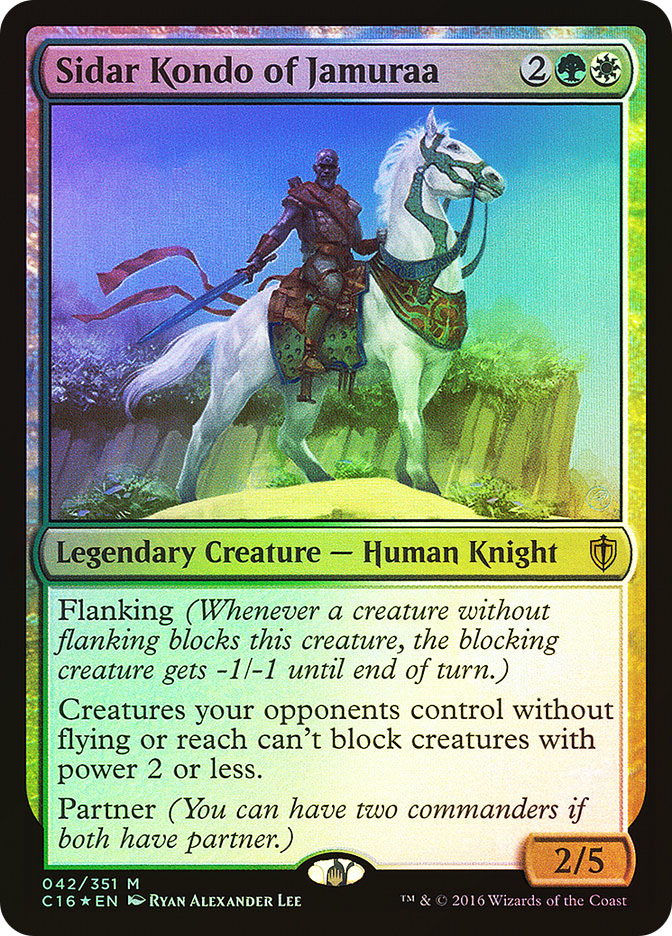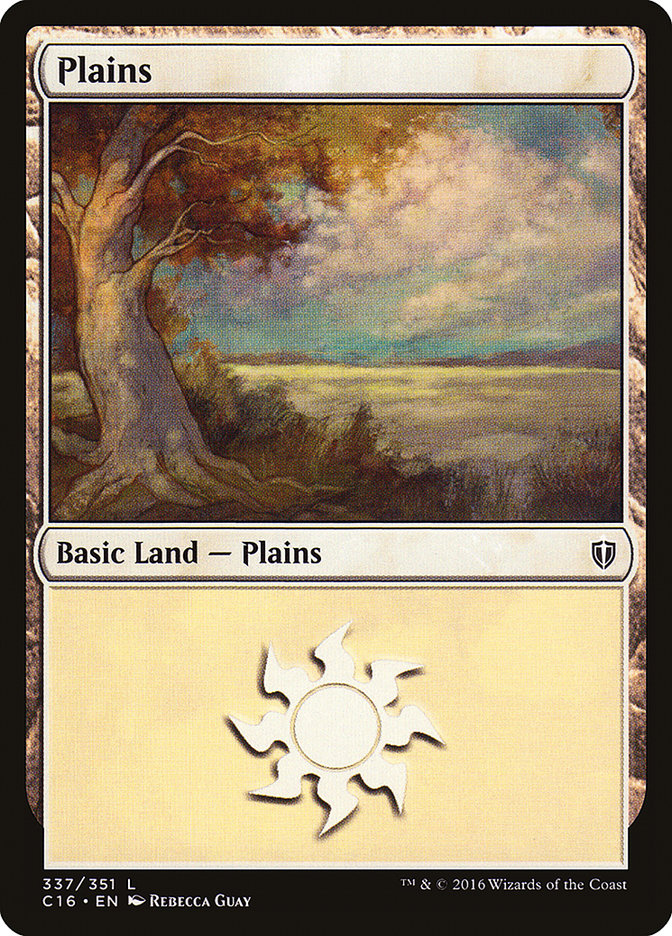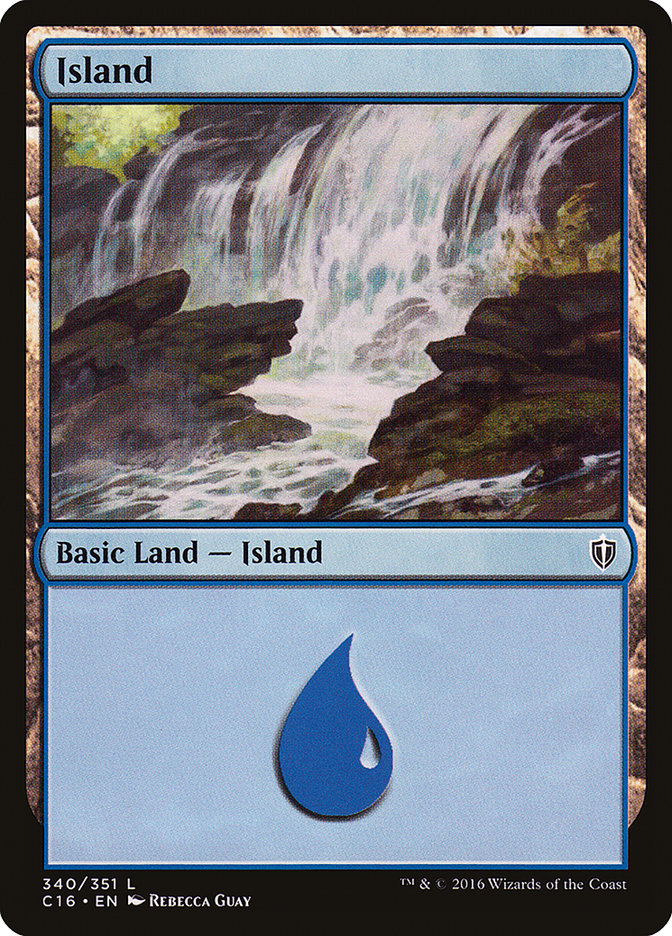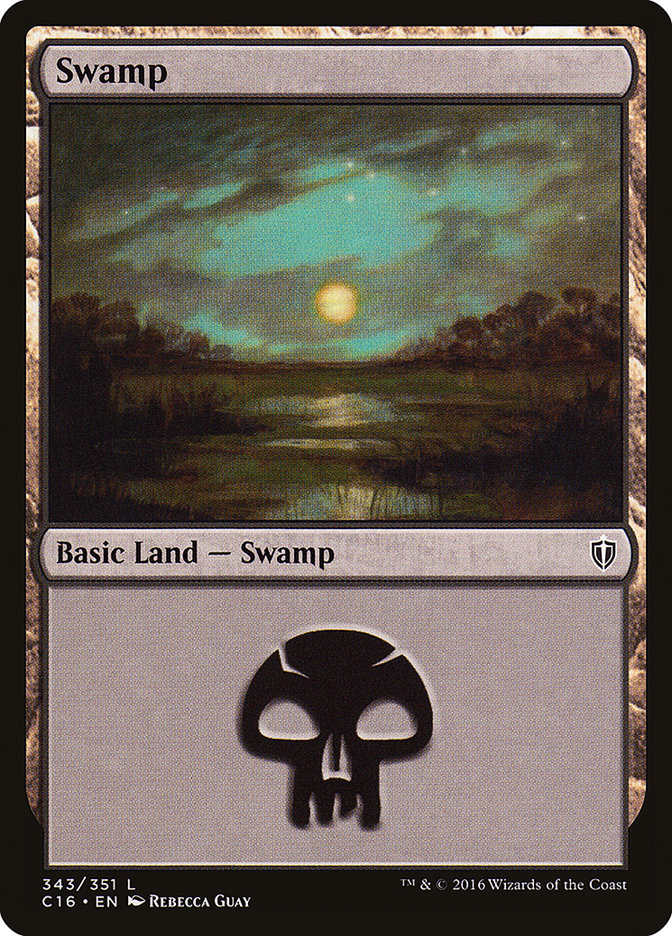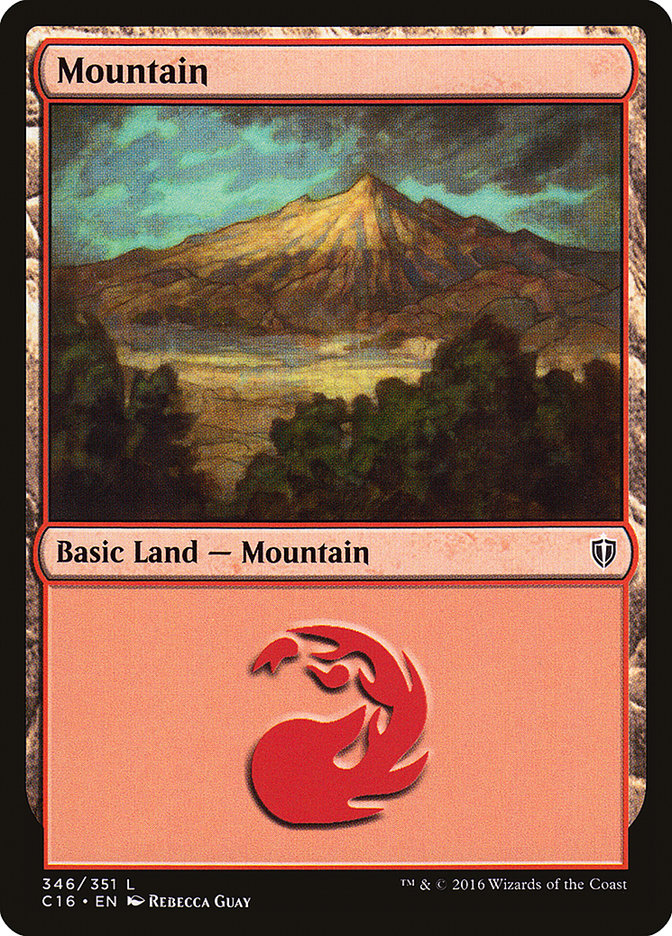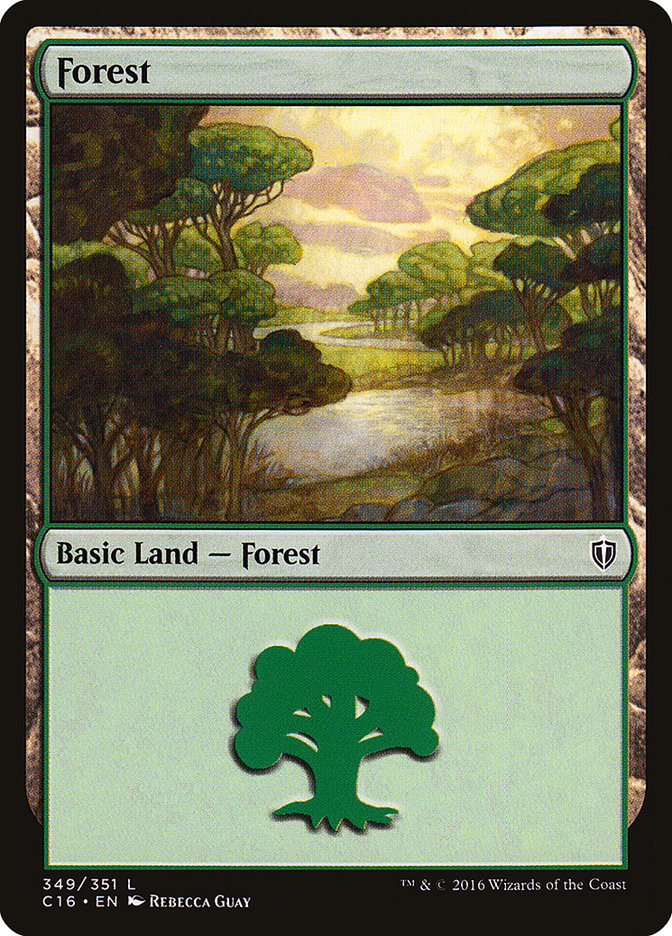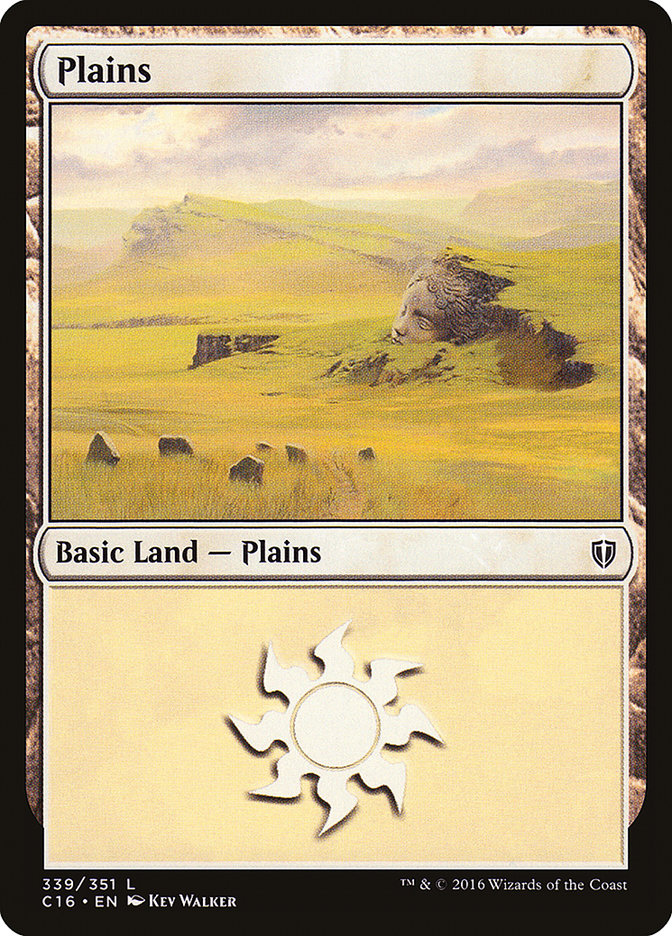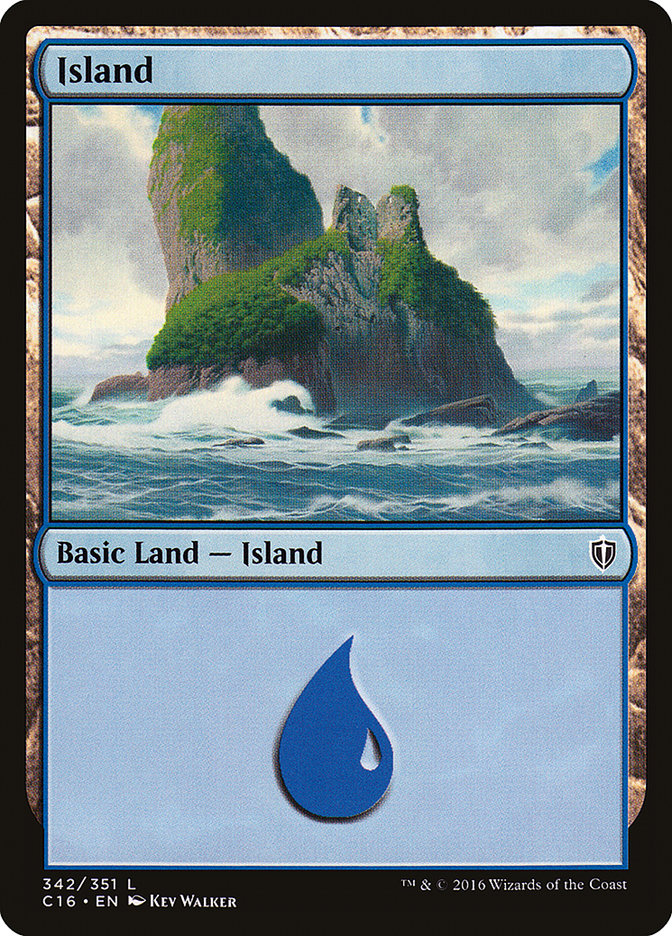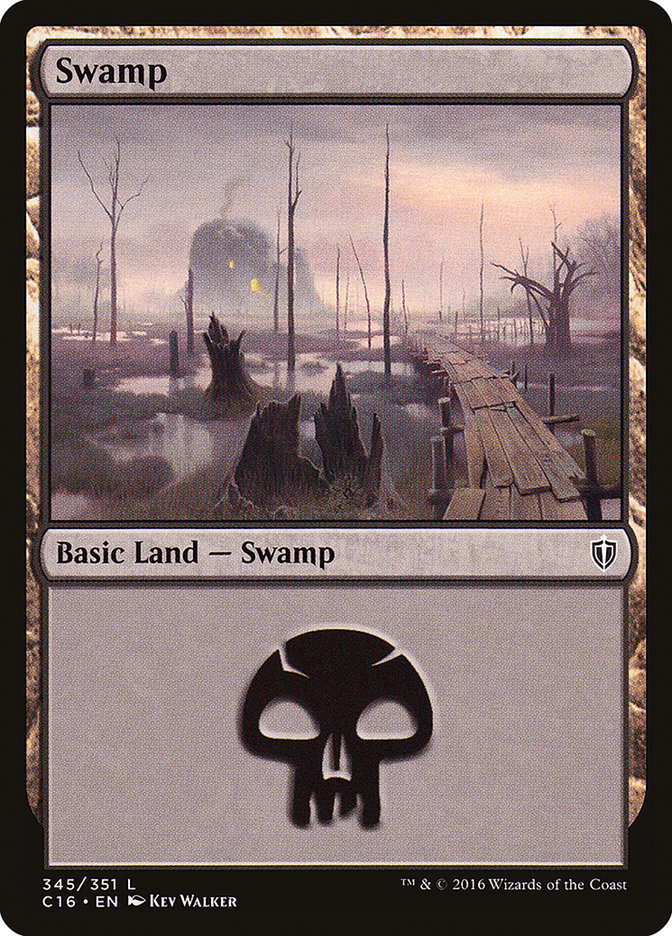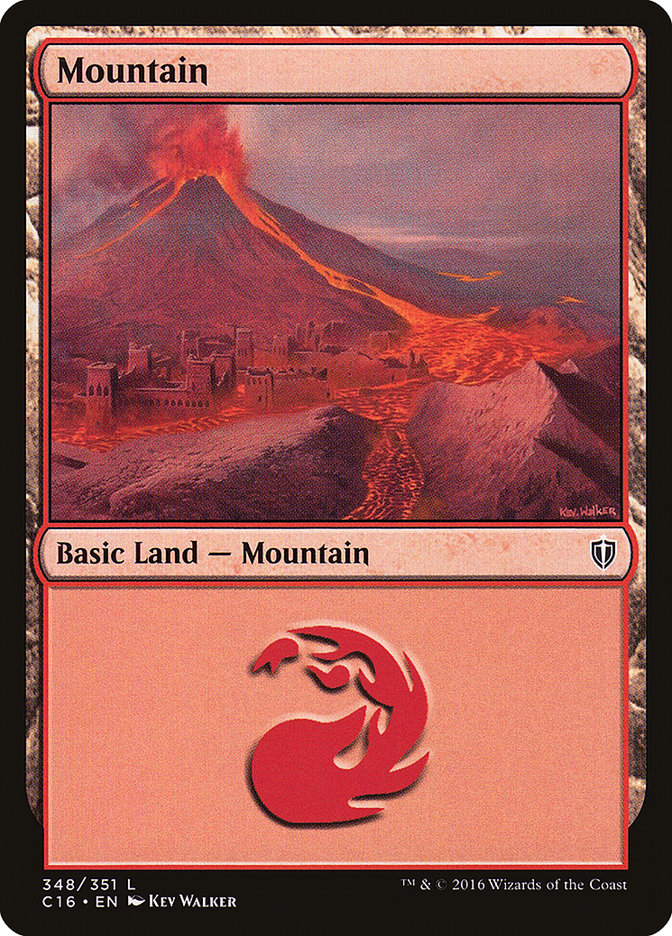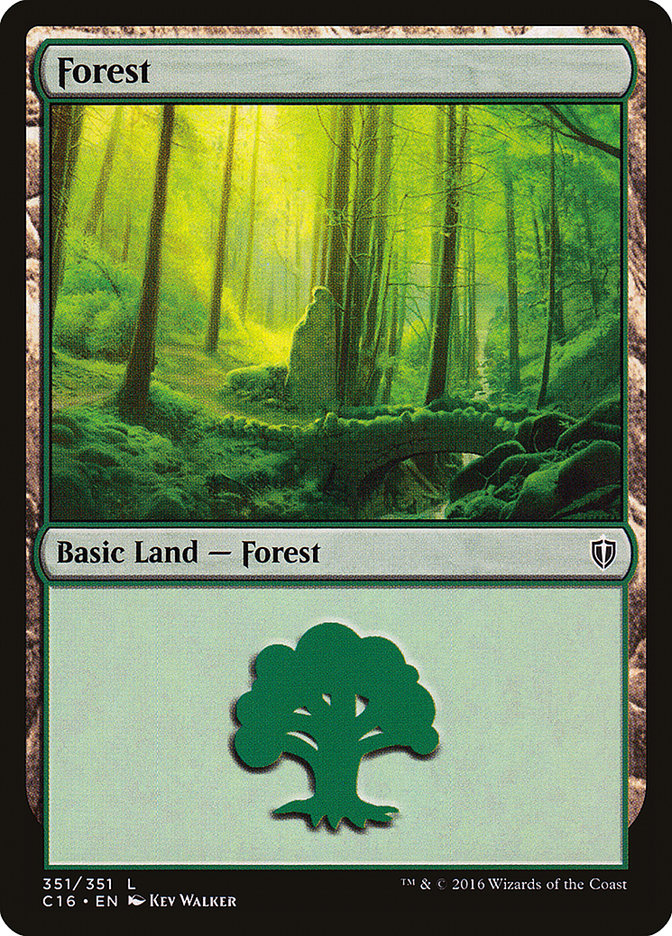A new set means a new opportunity to explore its art, words, and themes. Though most of the cards in it are reprints, Commander 2016 packs enough novelty (56 all-new cards — the easiest way to tell is that the first white reprint, Abzan Falconer, is card number 57 — plus some notable new artworks) to warrant the flavor review treatment.
The five colors of Magic and colorless artifacts each are represented in Commander 2016 by a group of five new cards. I’ll cover the notables below, followed by the new multicolored cards and the notable lands.
White
Of the five new cards that are mono-white, the first three alphabetically are the most interesting to me, mostly for their flavor texts. The one-liner on Duelist’s Heritage works in harmony with the card name. In the flavor text for Entrapment Maneuver, note how the traits the sergeant lists are associated either with black (greed) or red (rage, bloodlust).
On the other hand, Orzhov Advokist doesn’t strike me as quite right. If its customer-flock didn’t feel a need for repentance, the Orzhov wouldn’t have nearly the same hold over them. Had the flavor text said the Orzhov cared more about repayment than repentance, I would’ve believed it.
Blue
I’m curious how much of the newly appearing art in Commander 2016 is “slush art” (art commissioned but then unused and stored at Wizards of the Coast for later) and how much was commissioned specifically for the set. It’s worth noting that, in blue at least, if the art is slush, it sure didn’t wait long to get used. Look at the artist names:
Titus Lunter
Jason Kang
Tony Foti
Lake Hurwitz
Tommy Arnold
All of these artists made their Magic debuts within the last couple of years (think Khans of Tarkir or thereabouts for Hurwitz / Kang / Lunter, and much more recently for Arnold and Foti).
Grip of Phyresis, for example, is almost certainly a fresh commission; Hurwitz simply wasn’t around for New Phyrexia to paint it. On the other hand, it wouldn’t surprise me if Manifold Insights has art that went unused in Kaladesh block, judging by those robes. And those goggles-wearing Faerie Artisans are tremendously intriguing to me. What plane are they supposed to be from? Ravnica? An earlier, Faerie-including version of Kaladesh?
Black
Cruel Entertainment is a good example of a metaphorical illustration being more unsettling than a literal interpretation of what a spell does. Then again, it’s likely more effective on individuals of my age than those significantly younger, as I was in the prime age range to watch *NSYNC’s “Bye Bye Bye” music video with its prominent “puppet show” motif. I’m not sure how much sense the art on Curse of Vengeance actually makes — on closer inspection, there’s an overturned table, a spilled goblet, a dove flying in the beam of light, what? — but that glowing red sword headed straight at the figure on the throne sure gets the point across.
On the other hand, I have no idea what’s going on with the card name “Curtains’ Call.” The theatre term is “curtain call,” and it’s not like the other two Magic cards with “Curtain” in their names (Curtain of Light and Samurai of the Pale Curtain) trip over it. Maybe Wizards didn’t want to name a card “Curtain Call” after it’d recently been used as Jhin’s ultimate ability in League of Legends (Jhin was released in February 2016). Maybe Wizards wanted to play more heavily on the slang term “curtains,” itself a theatrically-derived reference to “the end.” Either way, it’s just jarring.
Red
Divergent Transformations is perhaps the set’s clearest example of slush art, or at least a card that changed after art commissioning. It’s much easier to imagine this as a slightly goofy pastoral scene, a lad and his loyal short-armed raptor surrounded by a flock of sheep, than it is to imagine two sheep randomly becoming a Human and a Lizard. At least this card got the adorable, slightly silly art out to the public! Similarly, the clearly Theros-inspired Frenzied Fugue looks like repurposed slush art (Theros already had Portent of Betrayal); the flavor text repeats a theme seen on Act of Treason and numerous other cards in Magic’s history.
Goblin Spymaster has a strong case for my favorite new nonland art in the set. What can I say? I’m a sucker for a Goblin in a tricorne.
Green
With Evolutionary Escalation, Kev Walker has an illustration slightly out of phase with the mainstream of Standard-legal Magic, but it gives me nearly the same feeling as seeing the artwork for Savage Punch. Technical dissection be darned, it’s viscerally awesome. And how about Primeval Protector? Forget about scale birds; this Avatar has a scale army!
The flavor text on Stonehoof Chieftain, though, makes me want to break out the red pen. “The pounding of” at the start is simply unnecessary (“His followers’ hearts matched the beat of his hooves” is more condensed and poetic), while “and their voices echoed his bellows” is painting the lily.
Artifact and Nonbasic Land
Boompile, while funny, is yet another reminder of Magic’s inconsistency in allowing gunpowder and other low explosives into its fantasy when they’re in bombs (and in the hands of Goblins), yet treating the idea of an arquebus in the hands of a Human as beyond the pale after the brief appearance of firearms in Portal Second Age.
Prismatic Geoscope, meanwhile, leaves me looking at the Steven Belledin art and wondering how, exactly, he pulled it off. It’s tricky enough painting a single landscape for Magic; to do multiples, at different angles, all just so you show them within the individual crystals of a quartz cluster? That’s an impressive degree of difficulty, like the next-level version of Ryan Pancoast’s Convincing Mirage art.
Ash Barrens is the only all-new nonbasic land in Commander 2016, and I love how the art subtly hints at all five of the basic land subtypes. There are the low Mountains in the distance, and the ambiguities of the new vegetation along the banks of the river suggest a future as a Plains, Forest, or possibly Swamp. There’s even an Island formed where the river (stream?) splits in two before becoming one again.
Multicolored
The true showpieces of Commander 2016, arguably the set’s secondary reason for existence (the first, of course and as it should be, is “to make money for Hasbro”), are the legendary creatures. This time around, four-color is the theme, both through five “face of the deck” legendary creatures and a series of smaller two-color “partner” legendary creatures that can tag-team as a deck’s commander.
I find the Shards of Alara (or, more properly, Alara-setting) four-color legendary creatures a bit shaky in their flavor justification; sure, there’s not much of a stretch to go from three colors to four, but the justifications for why Breya, Etherium Shaper should have incorporated red yet not green or why Yidris, Maelstrom Wielder should have picked up green and not white are tenuous, considering Alara’s theme as a whole is its regeneration into an integrated five-color plane. Plausible, especially when Magic Story explains why (Breya found the red “carmot” stone necessary for etherium on Jund, while Yidris was healed by the Maelstrom’s green magic), but tenuous.
Saskia the Unyielding, unlike virtually every other legendary creature mentioned in the Magic Story installment linked above, makes no mention of her home plane. Her art clearly takes inspirations from the North Sea, some Celtic, some Viking. Perhaps that’s where Magic is going after Amonkhet?
Unlike Breya and Yidris, the two remaining four-color legendary creatures have locked-in flavor. The notoriously go-it-alone red praetor of New Phyrexia, Urabrask, skipped Angel Horror Creation Day and so Atraxa, Praetors’ Voice was made without his input. Kynaios and Tiro of Meletis (yes, they’re a same-sex couple, but Reddit’s already covered that) represent the triumph of Human civilization on Theros, and their colors extend not only to the traditional white and blue of Meletis but also the red of Akros and the green of Setessa; only the color black is missing, reflecting their absence of selfishness and personal ambition.
The legendary creatures of Commander 2016 also bring to card-life beloved characters from Magic’s past. While Ludevic, Necro-Alchemist has drawn pans for the lack of mechanical connection to the character (and that groan-worthy pun) and somehow Bruse Tarl, Boorish Herder (aka Braum, aka Zendikar’s insult comic nonpareil) got printed without flavor text (!), some of the way-back reaches, like Sidar Kondo of Jamuraa, provide a link to Magic’s early stories.
Those Basic Lands
Where have these been hiding?! Rebecca Guay is one of Magic’s most polarizing artists (to the point where Unhinged made jokes about her being dropped from the roster: see Persecute Artist and Fascist Art Director for how bad things got), but those who love her work are nigh-obsessed. Already the Rebecca Guay basic lands from Commander 2016 are pre-selling for double those of the Mark Poole and Kev Walker cycles, and I can’t say I’m surprised.
There is one exception, though: the Kev Walker Island is pre-selling for the same as Rebecca Guay’s lands. Kev Walker is the single most prolific artist in Magic, and he was only a few cards short for players to be able to make a “KevCube,” a 360-card Cube for drafting consisting entirely of Kev Walker-illustrated cards with Kev Walker basic lands to match. If you think Wizards of the Coast never listens to the fans, here’s the proof you’re wrong.
Flavor!
That’s it for me this go-round. What’s your take on the flavor of Commander 2016? And where do you fall on the ever-popular topic of reprinted cards with new art? I’m genuinely torn on several of those votes.


